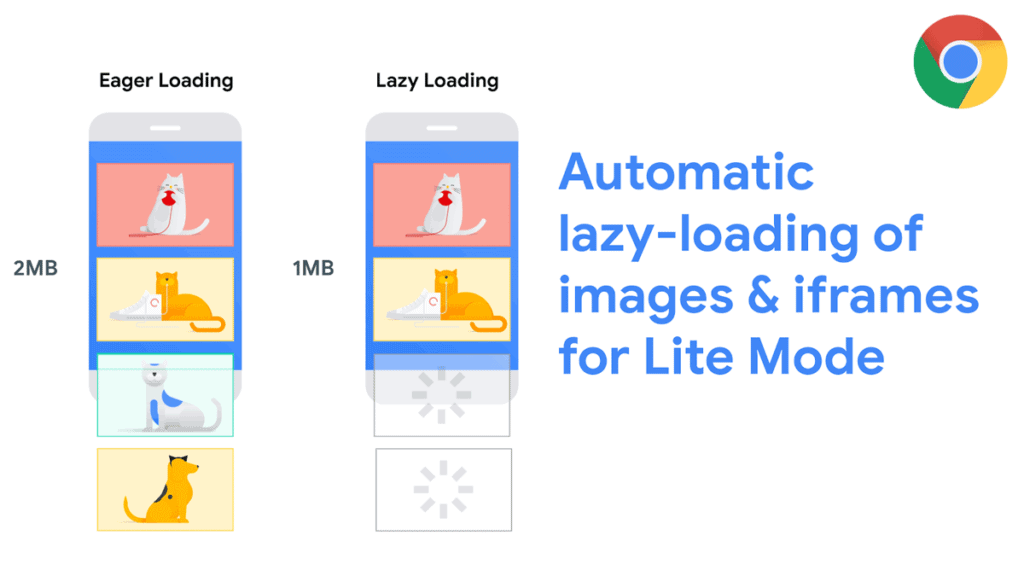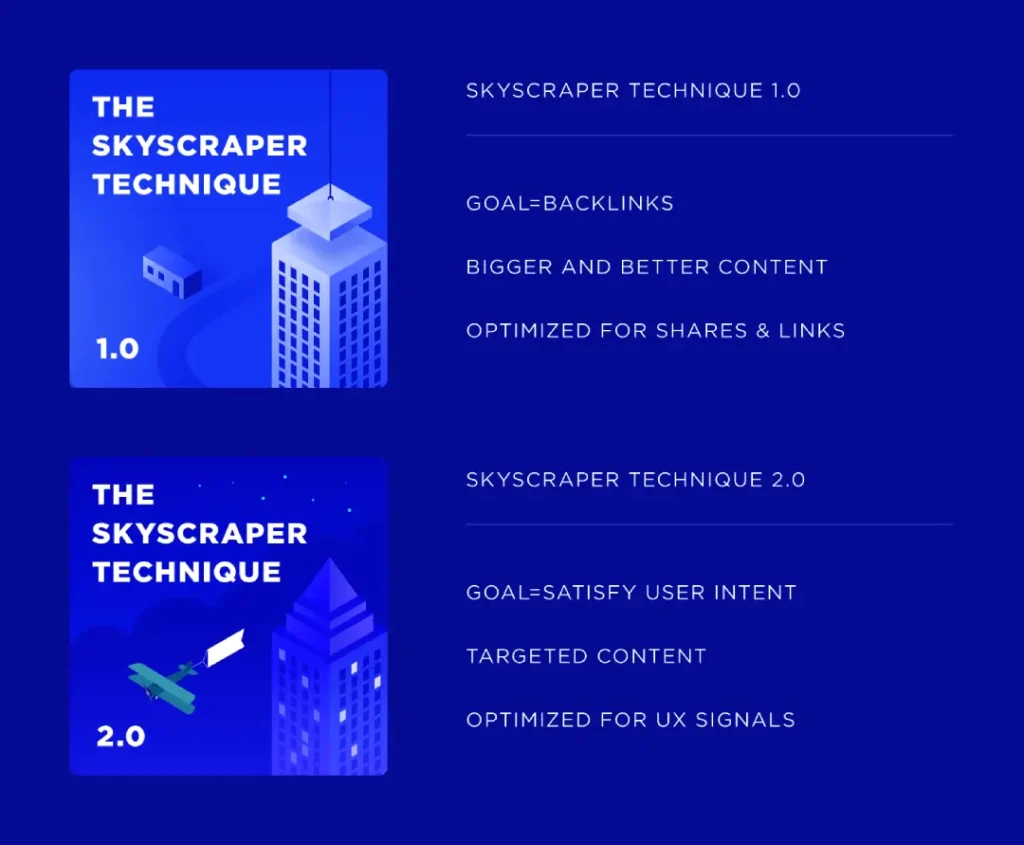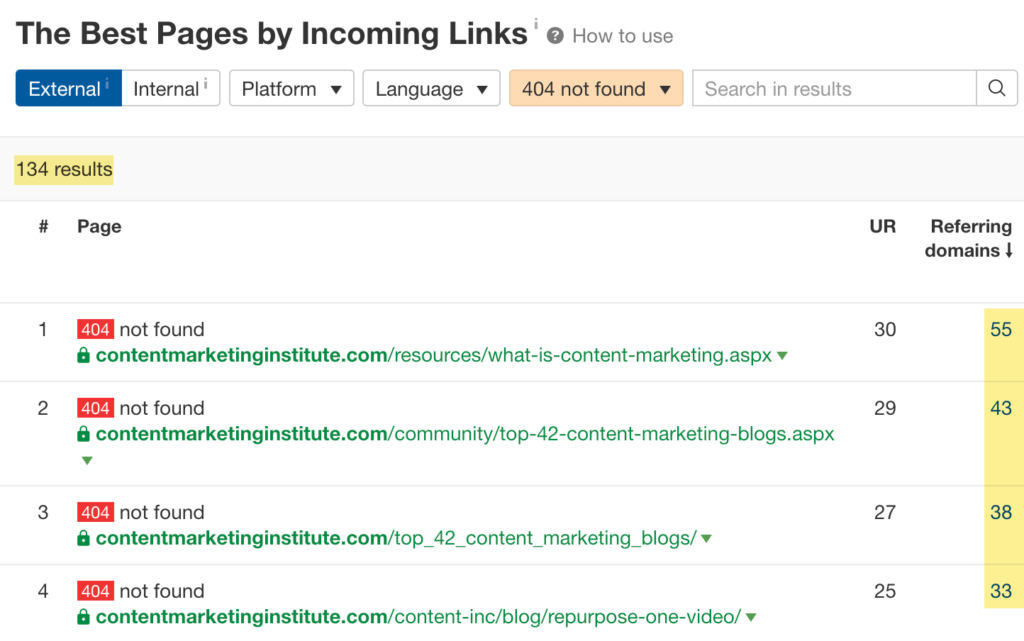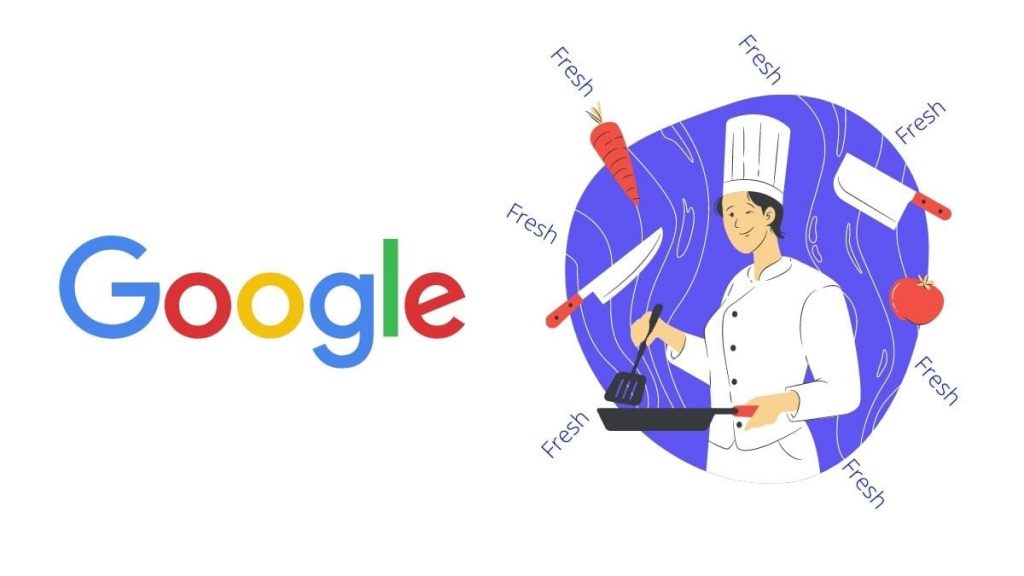How to Create a Winning SEO Strategy
Are you looking to up your SEO game? Get ready because this guide is the only thing you’ll ever need. We’re talking deep dives into every single tactic and strategy you can think of which will catapult your website and improving search engine rankings.
But hold on a second…
Table of Contents
Why is SEO so important?

We know that you usually use a search engine to find something online. Most people do — 53% of website traffic comes from organic searches. It’s safe to say that this marketing tool is indispensable.
The higher your keywords rank in search results, the more traffic you get. And with free and passive traffic at your fingertips, it’d be silly not to take advantage.
Let's dive into everything there is to know about winning big in SEO in 2024 and beyond!
Conduct Keyword Research Like a Boss
At the heart of any successful SEO campaign is a solid keyword strategy. These magical words are like maps to your website. Unfortunately, simply picking random keywords out of a hat doesn’t work. It’s about as effective as bread giving directions (dead-end at best). Instead, you must pick up your shovel and conduct some serious digging to unearth search terms that’ll drive real traffic.
Ask yourself what key phrases your target audience is typing into Google when looking for products or services like yours. What are their pain points? And how can you solve them?
To help you get started, here are a few nifty keyword research tools:
- Google Keyword Planner
- KWFinder
- Ahrefs Keyword Explorer
- SEMRush Keyword Magic Tool
These babies will give you access to tons of data, such as competition levels, search volumes, and even long-tail keyword gems that competitors have yet to discover.
Don’t get too excited over high-competition head terms; they’re typically SEO dilemmas that even the most potent websites struggle with. Instead, focus on ranking for low-hanging fruit (and maybe a few moderately competitive terms if you’re feeling frisky). As your domain authority increases over time, start taking bigger shots.
Design Pages for Both Search Engines AND Humans
Too many folks still treat on-page SEO as a shady algorithm hack. They stuff keywords everywhere like a kid hiding stale snacks under their bed.
Unfortunately, that's a flawed approach bound to backfire in today's relevancy-focused search landscape.
While optimising page elements like titles, headings, image alts, and body copy is crucial, you must strike a balance. Your content needs to engage humans first and foremost.
In other words, stop producing robotic word goop that only appeals to search bots. Those heartless code crunchers don't click links or buy products. Your customers do.
“You're Not the Boss of Me!” – First-class Titles & Descriptions
Have you ever used a search engine before? Of course, you have!
Then you know those page titles and meta descriptions at the top of each listing play a pivotal role in catching our eye. They're like the virtual storefront window enticing us to step inside.
Don't treat these elements like an afterthought or simply vomit up your keywords. Craft compelling titles and descriptions that make people want to click through.
Ask yourself:
- What's genuinely compelling or valuable about this page?
- What solution does it offer to the searcher's problem?
- How can I pique their curiosity or sense of urgency?
Leverage persuasive copywriting tactics to stand out in those dense search results. Here are a few quick tips:
- Use “trigger” words or phrases like “simple,” “best,” or “how to” to spike interest.
- Include emotional hooks, power words, or objection smashers.
- Make sure your titles precisely match the searcher's intent.
- List concrete benefits they'll receive after clicking.
If you can perfect those bite-sized advertisements, you'll outshine the competition and boost your coveted click-through rates.
Optimise Images to Engage Multiple Senses

Are you using images on your web pages? No, I'm not talking about cringe-y stock photos of cheesy models smiling at laptops or whiteboards.
I mean compelling visuals that add context, how-to steps, data visualisation, etc.
If so, you must optimise those images for both search engines and humans.
Pretend search bots are blind sentient beings trying to make sense of your website. Proper alt text enriched with relevant keywords helps them “see” those visuals.
However, don't spam alt attributes with a separate keyword list. That stint got old circa 2004.
State precisely what that visual element depicts or represents naturally. Easy as pie, right?
Humans benefit from optimised imagery, too. Those alt attributes pop up if images can't load or for visually impaired visitors using screen readers. Crafting them from an accessibility standpoint helps improve the overall user experience.
Oh, and remember to use descriptive file names, too! No more “image372.jpg” nonsense. Give each one a short but meaningful title utilising relevant keywords.
Make Your Content Ridiculously Thorough (And Fresh!)
You've seen piddly 350-word blog posts before, right? And by “seen” them, I mean you probably looked at them once and immediately bounced back to the search results.
Why? Because they needed to provide more meaningful substance or depth of information.
Today's users crave meaty, thorough content that fully answers their questions. The average word count for voice search results is 2,312 words.
To fully cover a topic inside and out, you need to:
- Discuss the main concepts in detail from multiple angles.
- Break things down with simple explanations or step-by-step walkthroughs.
- Include examples, definitions, supporting data or statistics.
- Address follow-up questions or potential objections the reader might have.
Your goal is to be the last word on that subject so people don't need to go elsewhere. That helps boost metrics like dwell time and decreases bounce rates, signalling to search engines that your content kicks butt.
Remember to go beyond words, too. Strategic use of multimedia like videos, graphics, charts, or custom visuals enriches the experience.
Be bold and occasionally update ageing content, too. Freshness is one of Google's ranking factors, rewarding pieces that maintain relevancy.
The more thorough and up-to-date your pieces, the more those precious ranking boosts!
Create “Spoke” Content to Feed Your Topical Authority
Have you ever heard of a content “hub?”
It's a highly in-depth piece (like a pillar page or long-form blog post) covering the main overarching topic or broad keyword. Think of those as the substantive centrepieces of any content strategy.
Your perfectly optimised spoke content then supplements and radiates outwards like the valley trails from a mighty mountain.
By producing these comprehensive topic clusters loaded with internal linking goodness, you continuously drill your subject matter expertise into search engines.
Over time, this compounds into topical authority for your targeted niche or industry, making you the de facto search leader.
As a real quick example, let's say your site is all about backpacking and hiking gear:
- Your central “hub” might be a massive 4,000-word guide on backpacking for beginners.
- Supporting spoke content covers narrower subtopics like how to pack a backpack, types of backpacking tents, backcountry cooking, etc.
- Every single one of those pages links back to your central pillar, solidifying its authority.
Search engines slurp up that sweet interlinked structure, associating your domain with that entire topic umbrella. It's also a surefire way to start ranking for related long-tail phrases.
Master the Art of Outreach & Link Building

Sites can’t ignore off-site optimisation if they want to be successful with SEO. Earning authoritative inbound links from other trusted websites is a crucial step. Links are like receiving glowing referrals or word-of-mouth marketing online.
When more high-quality sites vouch for you and link to your site, you appear more authoritative and trustworthy in Google’s AI brain. This PageRank algorithm by Google marks inbound link quality (and amounts) as a critical ranking factor.
Earning authoritative inbound links from other trusted websites should be prioritised if you want off-page SEO success. They act as virtual referrals that make your site seem more credible in the eyes of Google's search engine.
The patented PageRank algorithm values the quality and quantity of inbound links in terms of ranking pages. So don't waste time on low-authority sites; focus on earning links from relevant, high-authority ones.
But this isn't about spamming the internet with requests for backlinks to boost your site's authority. That used to work but doesn't anymore – doing so now will penalise you.
Instead, pour your energy into creating valuable content that naturally earns editorial links through strategic outreach and promotion over time.
Guest Posting: The Linkerati Way to More Visibility
One of the best ways to capture those precious inbound links is through good old-fashioned guest posting and blogging.
However, don't flood unmoderated sites with spun fluff content with keyword-rich anchor text links. Those cheap tactics will only hinder your SEO juice and brand credibility.
Focus on identifying relevant websites or blogs in your niche with legitimate editors and strong domain authority. Then, pitch them mouth-watering content ideas that'd fit their audience perfectly.
The key is crafting insightful posts that provide unique value to their readers. That way, you're not just slipping in a cheeky backlink. You're contributing long-lasting resource material they're happy to link to in context.
To seal the deal on that guest blogging hustle, try engaging with the site's community ahead of time, too. Share and comment on their social media channels so you're not wholly unknown when you reach out.
The Skyscraper Technique to Score Links Galore

Brian Dean of Backlinko created the “skyscraper technique” to discover link-worthy opportunities on other sites that you can surpass with better content.
First, identify the content most linked to and shared in your industry using tools like Ahrefs, Moz, or SEMRush. Select posts that are ancient or shallow and make a list of them.
Now, expand on those concepts in fresh ways that add 10X more value than the existing pieces. We're talking:
- More meaty substance and details
- More thorough explanations
- Updated facts and data
- Extra visuals and multimedia elements
- Bonus tips, tools, tactics – anything new and unique!
Once you've crafted your skyscraper content tower, it's time to scan for all those websites linking to the older pieces. That's your hit list of people to reach out to!
Politely notify them there's a new definitive resource on the topic that surpasses what they're currently linking to. With persistent and friendly outreach, many will swap out those outdated links with references to your superior guide instead.
It's a link-building win-win! You get valuable backlinks to your cornerstone content, and their sites now have a fresher piece to reference.
Getting Chummy with Roundup Posts & Listicles
Combining the web for relevant topics or trends in your space that curators are already compiling roundup posts or listicles around is an epic link tactic.
Since these “best of” pieces inherently link to different sites or resources, it also presents the perfect opportunity to get your content included in the mix.
For example, you might hunt down blog roundups featuring:
- Best [your industry] blogs of 2024
- Most shared [your topic] resources this month
- Experts' favourite tools for [your niche]
Identify the moderator or editor behind the scenes who is putting these together. Compliment their curation efforts and passionately pitch why your latest content deserves a shout-out in their next roundup instalment. The more thorough and convincing your pitch, the better your chances!
You can also reverse engineer this tactic by becoming the curator yourself! Do the grunt of pulling together an epic industry roundup or listing MVP resources. As you build it out, contact the brands or influencers highlighted and tell them you're linking to their sites.
They'll likely share and engage with your post, earning you some sweet editorial links.
Leverage Public Data & Studies for Easy Publicity Links
Did you know that 82% of statistics are made up on the spot?
I'm joking, but this does speak to one significant link opportunity that folks overlook all too often. Put simply, it means conducting public research or surveys and transforming that data into newsworthy studies.
Here's how this link-building technique can unfold in your favour:
- First, gather objective data on something insightful related to your product or service. That might mean fielding consumer surveys, running internal case studies, or commissioning formal research projects.
- Next, package that newfound information into a visually appealing report or data breakdown with legitimate news value and interest for your customers and industry publications.
- If your study findings are compelling enough, you must only pitch the story or stats to relevant online media outlets, publications, or blogs in your niche. Many will happily cover or link to your original data in their writeups, netting you referral backlinks and brand exposure!
Advanced Link Building Techniques
If basic tactics like guest posting and data-driven content marketing aren't enough to fuel your link-building momentum, check out these next-level linking strategies instead:
Become Resource Repositories
One of the best ways to attract natural backlinks is by offering free tools, resources, guides or templates that people in your niche genuinely find valuable.
For example, let's say your website is all about helping beginners master graphic design:
- You might create a browser-based tool that generates custom colour palettes
- Or publish a free six-part email course teaching logo design fundamentals
- Perhaps you code up a plugin for quickly creating mockups and wireframes
By constantly pumping out legitimately useful freebies, you position your site as an invaluable industry resource that others can't help but reference and link back to. It also helps strengthen brand affinity and top-of-mind awareness.
Broken Link Building with Purpose

While the broken link-building technique has existed for ages, it's still an extremely reliable way to earn links from authority sites in your space.
The premise is simple: Use tools like Ahrefs to find websites linking to dead or broken pages. Then, let web admins know they're linking to dead ends, offering your related content as an active replacement.
However, offer up way more than a typical resource swap to make this strategy shine. Go above and beyond with tailored insights or an entirely new content piece that'd blow their broken link out of the water.
For example, if a top DIY site in your niche has a broken link related to custom 3D printers, you could quickly compile an exhaustive new guide on using 3D printers for DIY projects at home. That type of purpose-driven value will make it far easier to acquire that replacement link.
Ego Baiting that Melts Influencer Hearts
While ego-baiting sounds like some silly Avengers villainy, it's a fantastic way to earn backlinks for your site.
The idea is simple: Find real influencers, experts, or brands your audience perceives as authorities in your space. They'd love their insights or products to get more public attention.
So, feature them or their work prominently in some form of content! For example:
- Interview them alongside other thought leaders on an emerging trend or hot topic
- Conduct case studies analysing their products or services
- List or rank them among the most authoritative voices in your industry
Once published, reach out to each featured party and inform them about your valuable exposure. More often than not, they'll happily link back or share that content gem with their audiences if it makes them look like the pros they are.
Just remember never to position this as a cheesy link solicitation. Focus on delivering actual value and altruistically putting their expertise on a pedestal. You'll earn both links and credibility in one fell swoop.
SEO is a Marathon, Not a Sprint
Although we’ve gone over an arsenal of tactics and techniques that will surely blow up your website traffic let’s get real:
SEO is a marathon, not a sprint.
Why? Because search engines like Google have become more innovative than ever. They analyse signals beyond content and links to understand things like:
- Your website’s technical architecture and user experience
- How much trust/authority did you build via citations and credibility?
- How users interact and engage with your site
And they’re only getting more intelligent with machine learning and AI, allowing them to understand searcher intent truly.
With all that said, here are a few parting tips to help you pace yourself for the SEO long haul.
Focus on Building Topical Authority (E-E-A-T)

Remember that whole “content cluster” concept we touched on earlier? That's the start of solidifying your domain as a reputable, authoritative source on core topics.
As an SEO best practice, continually expand and interlink your informational content while earning credible inbound links. This ultra-thorough subject matter commitment signals to Google that you're legit.
Authority, however, goes beyond just links and content depth. It also hinges on establishing Experience, Expertise, Authoritativeness, and Trustworthiness (E-E-A-T).
This means regularly showcasing your:
- Professional credentials or notable experience
- Editorial guidelines or vetting practices to uphold accuracy
- Social proof through customer testimonials or prominent reviews
- Company history, leadership team, professional accreditations
- Physical address and contact information—not anonymous ghostwriters
Keep optimising for E-E-A-T signals across your entire website and off-site properties. It proves you're the go-to source worth ranking.
Elevate Your Site's Technical Architecture & UX
While churning out optimised content and links is crucial, that's merely the foundation of SEO. You must also meticulously optimise your website's architecture or risk getting left in the dust.
After all, Google doesn't just care about publishing fantastic content. If your site feels sluggish, breaks on mobile devices, or serves a poor user experience, expect to watch those rankings tank accordingly.
So, what exactly should you prioritise on the technical side? Here are just a few best practices:
- Fine-tune performance metrics like page speed across all devices
- Implement a logical, SEO-friendly URL and site structure
- Optimise for mobile responsiveness and design
- Utilise structured data like schema markup to stand out in SERPs
- Address duplicate content, redirect chains, and crawl errors
- Secure your domain with HTTPS and address any security vulnerabilities
- Fix anything that causes a frustrating or clunky user experience
Be proactive about site maintenance and regular technical audits. Diligently crossing these boxes while keeping your content strategy fresh is how you'll attain long-term SEO success.
Laser Focus on Search Intent and User Engagement
Modern search engines like Google employ advanced AI algorithms to understand user intent behind searches and queries better.
In other words, they're no longer seeking content stuffed with keywords. Google looks at signals like click data, dwell times, and bounce rates to gauge whether a result genuinely satisfies what users are looking for.
So stop churning out list-based, keyword-optimized fodder for every topic. That's a losing strategy destined to flop.
Instead, concentrate on understanding the specific search intent per keyword phrase. More specifically:
- Informational intent (to find factual info on a topic)
- Navigational intent (to locate a particular website or page)
- Commercial intent (to research products and services)
- Transactional intent (to complete an action like purchasing)
With a solid grasp of intent and user needs, you can develop comprehensive content optimised to satisfy that query. That means a great user experience, low bounce rates, and positive engagement signals that Google gobbles up.
Focus less on games or shortcuts and more on thoroughly answering users' questions. Lay out a virtual red carpet from start to finish, seamlessly removing any barriers to fulfilment.
That's how you'll transform from a forgettable blip on the results to a domain with steadfast, consistent rankings.
Winning SEO Strategy FAQs
What's the number one thing I need to improve my SEO?
There isn't just one thing that will help you magically get to the top of the search results. It’s a combination of efforts. The most effective strategy includes optimising content, technical architecture, and links. You’ll also need to consider search intent, user experience, authority/trust signals, etc. It’s an ongoing process rather than something you check off a list.
Is keyword stuffing still worth it?
Absolutely not. Loading your content with keywords for the sake of it is frowned upon by search engines these days. They're smart enough to detect this kind of spam but don't like it. Focus on creating top-notch content instead.
Can I pay for higher rankings?
You can buy sponsored links at the top of specific results pages through Google Ads. But know this does not impact your organic ranking — only where ads are shown and displayed. You must do real work to improve your rankings, as they appear naturally in standard searches.
How quickly will I see results from SEO?
SEO might be powerful, but it doesn’t deliver overnight success. Most experts say you'll see significant improvements in organic traffic and rankings after 6-12 months of optimising and publishing regularly.
Is having good SEO still worth it?
Yes! Over 50% of website traffic comes from organic searches, so a strong presence is crucial for most businesses. While there are never any guarantees when making an investment like this one, time and resources spent on SEO tend to yield better ROI than other marketing channels over time.
